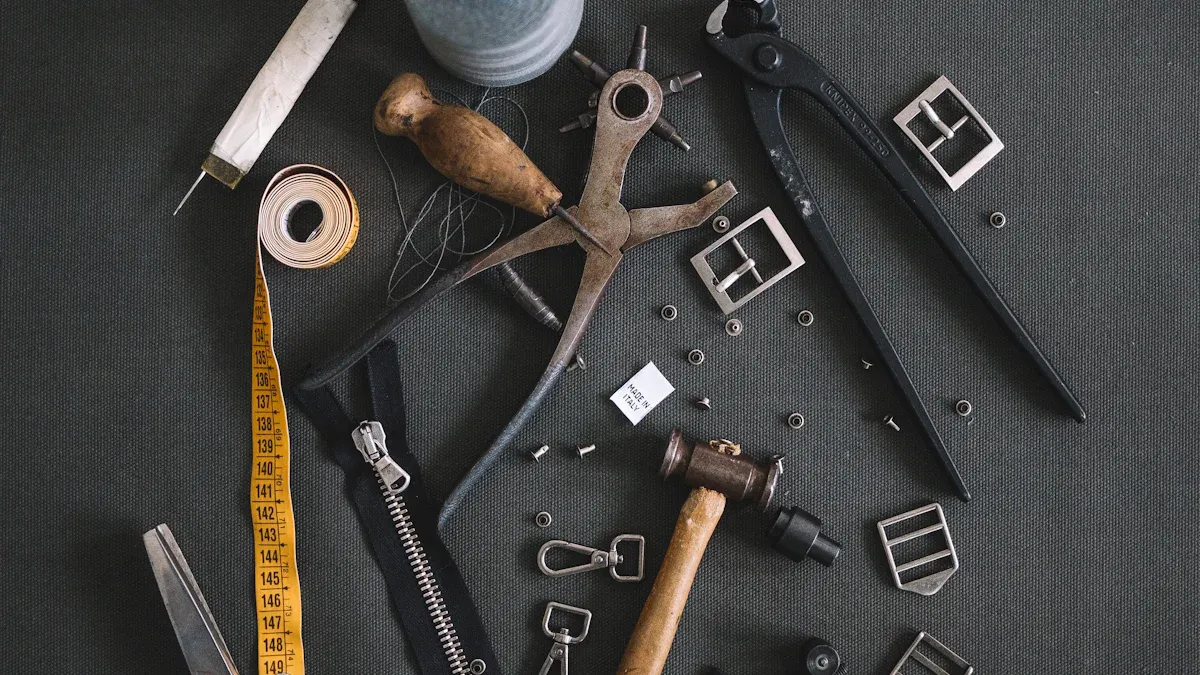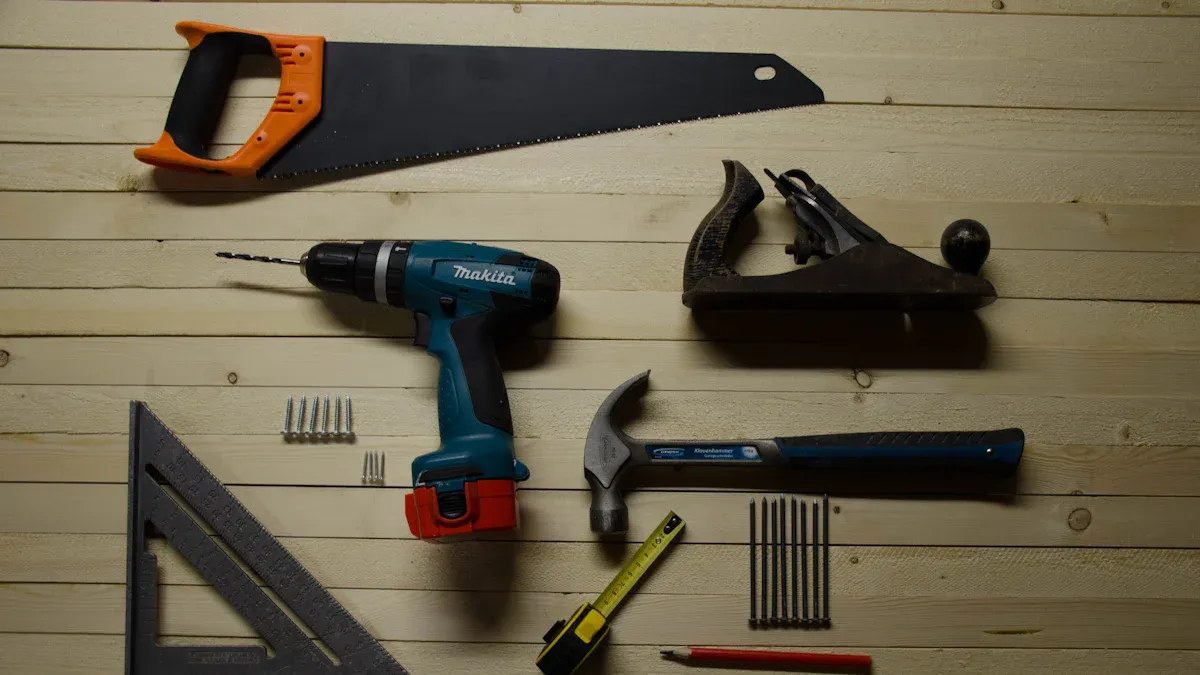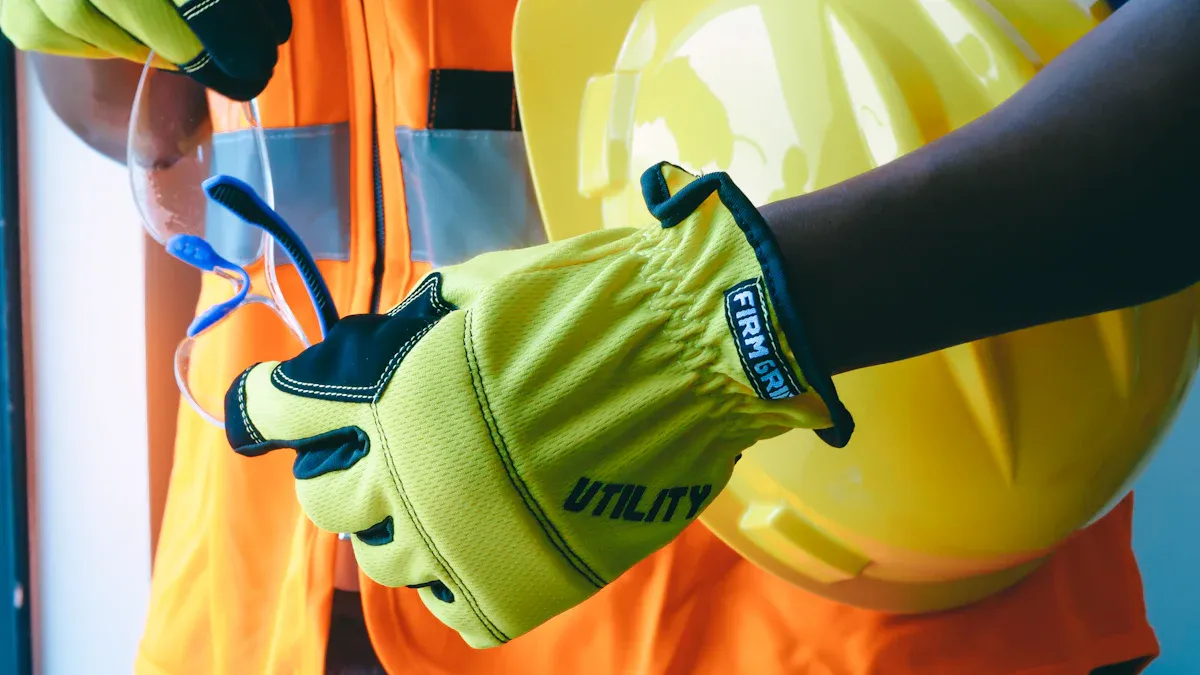
Your construction tools face real risks every day. Many people only find out why your tools might not be covered—and how to fix that before the next job after damage or theft. You keep your toolbox ready, but coverage gaps often show up after a loss. Good tool management and inventory can save your next construction job and protect your toolbox.
Key Takeaways
Many contractors think their tools are covered by general insurance, but this is not always true. Always read your policy and keep proof you own your tools. This helps you avoid denied claims.
Keep a list of your tools with details like serial numbers and photos. This protects your tools and makes insurance claims faster.
Ask your boss about tool coverage and get the answer in writing. If you need to, get your own tool insurance. Use good tool management to stop loss and damage.
Why Your Tools Might Not Be Covered

You work hard on every construction job. But your toolbox could be in danger. Many contractors think their tools are safe with general liability or business insurance. That is not always right. Let’s look at why your tools might not be covered—and how to fix that before the next job.
Ownership and Employer Policies
Who owns the tools for the job? This question is very important. If you use your own tools but work for a company, you might think their insurance covers your toolbox. Sometimes, it does not. Many employers only cover company-owned equipment. If you buy your own drill or saw, check if your employer’s policy covers personal tools.
Tip: Always ask your employer for a written policy about tool coverage. If you’re self-employed, make sure your business insurance lists all your tools.
Insurers want proof that you own your tools. They often ask for receipts, serial numbers, and photos. If you cannot show you own the tools, your claim might get denied. Keep digital records in a safe place, like cloud storage, so you can get them anytime.
Expired or Wrong Insurance
Insurance can be confusing. Many contractors buy the cheapest policy or keep the same one for years. That can be risky. You might have insurance that expired last month or does not cover the right things. Some policies only protect tools at your main office, not at a job site or in your truck.
Here are some common mistakes:
You think general liability covers your toolbox. It usually does not.
You skip special coverage like Contractors Equipment & Tool Coverage or Inland Marine insurance.
You forget to check your policy when you buy new tools.
You ignore deductibles and coinsurance rules, which can make you pay out of pocket.
Note: Business equipment insurance and Inland Marine policies in Georgia or South Carolina can protect your tools in transit or on the job. Do not wait until you lose tools to find out you are not covered.
Missing Tool Inventory
You cannot protect what you cannot track. Many construction pros forget to keep a current tool inventory. If you do not list every tool, you could lose coverage. Insurers want to see a detailed, up-to-date list with serial numbers, values, and photos. If you buy a new saw or lose a drill, update your inventory right away.
A missing or old tool inventory can cause big problems:
Claims get denied or delayed.
You pay out of pocket for lost tools.
You miss coinsurance requirements and face penalties.
You forget to add new tools, so they are not covered.
Focus on what you lose the most: If you often lose small hand tools or power tools, make sure they are on your site-specific inventory. Tools need a home, and a good inventory helps you keep track.
Policy Exclusions
Insurance policies have lots of fine print. Exclusions are the rules that say what is not covered. If you do not read these, you might get a bad surprise after a loss. Here are some common exclusions:
Normal wear and tear—insurance will not pay for tools that break from regular use.
Mechanical breakdowns—if your drill stops working, that is usually not covered.
Intentional loss or negligent use—if you ignore safety instructions, your claim might get denied.
Natural disasters—floods or earthquakes often need special endorsements.
Tools older than five years or over a certain value—some policies limit coverage for older or expensive tools.
Stationary equipment—big machines that do not move may not be covered under tool insurance.
Business vehicles—tools attached to vehicles need separate commercial auto insurance.
Alert: Always review your policy’s exclusions. If you work in areas with hurricanes or floods, ask about extra coverage. Do not assume your toolbox is safe just because you have insurance.
Poor Tool Management
Tool management is more than just tossing everything in your toolbox. If you do not organize, track, and store your tools the right way, you risk losing them—and your insurance claim could get denied. Poor tool management leads to lost tools, missed jobs, and wasted money.
Here is how bad tool management hurts you:
You use disconnected systems, so you cannot find tools when you need them.
Manual tracking leads to mistakes and missing items in your site-specific inventory.
You do not update your tool inventory, so new tools are not covered.
You store tools in unsafe places, making them easy targets for theft.
You ignore manufacturer guidelines, which can void warranties and insurance.
Focus on what you lose the most: If you keep losing tools on big construction sites, set up a better tracking system. Use labels, checklists, or even simple apps to manage your toolbox.
A good tool management plan helps you protect your investment, finish every job on time, and avoid costly mistakes. Remember, lost tools mean lost money and lost jobs.
How to Fix That Before the Next Job

You want to feel sure before your next construction job. You need to know your toolbox is safe. You should check that your tools are counted. You want your insurance to pay if something bad happens. Here are ways to fix coverage gaps before your next job. These steps help keep your organized toolbox safe.
Update Tool Inventory
A current tool inventory helps you a lot. If you do not know what tools you have, you cannot protect them. Start by writing down every tool in your toolbox. Include serial numbers, when you bought them, and how much they cost. You can use a spreadsheet or an equipment management platform. These platforms let you give tools to users and track them at job sites. They also help you count tools in real time. Many contractors use mobile apps to scan barcodes or QR codes on tools. This makes checking tools in and out easy.
Best practices for updating your tool inventory:
Use inventory software or a spreadsheet to list each tool, its location, value, and condition.
Add barcodes or QR codes to your tools for quick scanning and updates.
Group tools into kits to make tracking easier.
Make rules for moving tools between places.
Check your toolbox often—do not wait all year.
Tip: Central dashboards help you see what is missing fast. You can track tools from far away and check usage history for audits.
Here is a quick look at some digital tools that help with tool management:
Tool Name | Best Use Case | Trial Availability | Pricing Details |
|---|---|---|---|
Workwize | End-to-end IT inventory | Free demo available | Starting at $8/month/seat + platform fee |
InvGate Asset Management | Automated asset discovery | Free trial available | Starting at $0.21/node/month |
Total Network Inventory 6 Pro | Hardware/software discovery, dashboards | Starting at $135 for 25 devices |
A strong tool organization system means you always know what is in your toolbox and where it is. This helps stop tool loss and makes sure your insurance covers everything.
Confirm Coverage with Employer
Before your next construction job, talk to your employer about tool coverage. Do not just guess that your company’s insurance covers your personal toolbox. Ask for proof in writing. Request a copy of the policy or a summary that shows what is covered. If you use your own tools, see if your employer can add a rule to your agreement or policy.
Ask your employer for written proof of tool coverage.
Request that missing coverage be added to your work agreement.
Look over the paperwork to check the details.
Ask the plan administrator if you have questions.
Find out if the insurance is commercial or self-funded.
Talk to HR or benefits staff if you worry about your job offer.
If needed, get the insurance company’s contact info to check details yourself.
Note: If you work in Georgia or South Carolina, make sure your employer’s policy has Inland Marine coverage. This protects tools while moving or at the job site, not just at the office.
Get Personal Tool Insurance
If your employer’s policy does not cover your toolbox, or if you work for yourself, you need your own insurance. Contractor tool insurance and business equipment insurance are made for this. Look for policies that cover theft, fire, vandalism, and loss at job sites, in vehicles, and in storage.
Here is a comparison of top insurers for personal tool insurance:
Insurer | Best For | Key Advantages | Notable Features | Customer Ratings & Financial Strength |
|---|---|---|---|---|
Liberty Mutual | Most businesses | Flexible policies, covers heavy/rented equipment | Replacement cost or actual cash value, adjustable deductibles, in-house claims team | A- BBB, A AM Best, A2 Moody’s, A S&P |
NEXT | Small contractors | Affordable, online-based, strong customer satisfaction | Add-on to general liability, online management, licensed advisors | B BBB, 4.07/5 BBB, 4.7/5 Trustpilot, A- AM Best |
Chubb | Large firms, expensive tools | High limits, great service | Replacement cost for tools under 5 years, pollutant cleanup, endorsements for employee tools | A++ AM Best, AA S&P, AA Fitch, Aa3 Moody’s |
THREE | Small businesses, bundled | Simple contract, covers multiple business risks | Covers tools, liability, cyber, workers’ comp, auto, property | A+ BBB, 4.8/5 BBB, 3.2/5 Trustpilot, Berkshire Hathaway backing |
When you compare policies, look at these things:
Add endorsements for special tools or needs.
Bundle policies for discounts.
Check how claims are handled and customer service.
Make sure you can change coverage as your needs grow.
Callout: Always figure out replacement costs using today’s prices, not old ones. Think about how much money you lose if you cannot work because you lost tools.
Improve Tool Management
Good tool management keeps your organized toolbox safe and your jobs on track. Do not just throw tools in a pile. Use labels, checklists, and digital tracking to keep things in order. Do not leave tools in risky places, like outside during storms. Make copies of your tool records and store them in different places—cloud storage works well.
Effective tool management practices:
Stay away from risky situations—do not leave tools out in bad weather.
Accept small losses if it costs less than insuring every little item.
Spread out your tools and records to lower risk.
Use security devices and alarms to stop theft.
Use insurance and contracts to share risk when others use your tools.
Tip: Write down maintenance and repairs. This helps with insurance claims and keeps your tools working well.
Regular maintenance and good storage make tools last longer and help you follow insurance rules. Keep tools sharp, clean, and set right. Store them in a dry, safe place. Write down every maintenance job. This protects your investment and helps you avoid denied claims.
Prevent Losing Tools
You work hard for your tools. Do not let them get stolen or lost. Stop losing tools by setting up strong security at every construction site. Use fences, locked gates, and good lighting to keep thieves away. Install alarms, cameras, and GPS trackers on valuable equipment. Give every tool a special ID number and keep good records.
Top strategies to prevent losing tools:
Use fences and locked gates to secure the site.
Teach workers about access and security rules.
Use bright lights and cameras after hours.
Install anti-theft devices and GPS trackers.
Give each tool an ID number and keep records.
Hire security guards if needed.
Set up alarms with real-time alerts.
Turn off heavy equipment when not in use.
Change locks and security systems often.
Work with risk managers to plan and train for theft prevention.
Remember: An organized toolbox and a strong tool management plan are your best defenses against loss. Stopping tool loss saves you money, keeps your jobs going, and protects your reputation.
If you find a gap in your coverage, act fast. Update your tool inventory, check your insurance, and set reminders to review everything before your next job. Do not wait until after a loss to fix your coverage. Protecting tools on the job is easier than dealing with a denied claim.
Need help? GSP Insurance Group can check your current coverage or give you a custom quote for contractor tool insurance, Inland Marine policy Georgia, or insurance for contractors SC. Make sure your toolbox is ready for every construction job—contact us before your next project.
You can avoid lost tools and big repair bills by staying proactive. Check out this table to see how managing your tools before each job saves money and keeps you safe:
Aspect | Reactive Approach | Proactive Tool Management |
|---|---|---|
Cost | High | Lower long-term |
Downtime | Unpredictable | Planned and minimal |
Don’t wait until you lose tools. Keep your tools organized, use a checklist, and double-check coverage. Protecting tools on the job means fewer lost tools and more money in your pocket. Ready for peace of mind? Contact GSP Insurance Group before your next job.
FAQ
What is the best way to keep track of tools for the job?
You should use a tool inventory. Try equipment management platforms or a simple spreadsheet. Tools need a home, so update your list after every job.
How can I prevent losing tools on a busy construction site?
Set up an organized toolbox and use a tool organization system. Label everything. Teach your crew to focus on what you lose the most and keep a site-specific inventory.
Why do insurance claims for lost tools get denied?
Most claims fail because you do not have proof of ownership or an updated tool inventory. Good tool management and documentation help prevent losing tools and denied claims.
